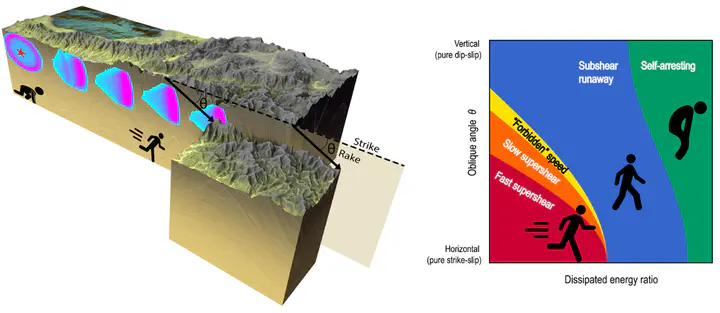Supershear ruptures

Among the most damaging natural hazards, earthquakes are still today one of the least understood phenomena in Earth Sciences. Earthquakes happen when rocks on either side of a tectonic fault slide. The sliding, however, does not occur along the whole fault at once but starts at one point, the hypocenter, and then spreads over the entire fault at a speed known as the “rupture speed” of the earthquake. Geophysicists are particularly interested in rupture speeds because the faster they are, the stronger the seismic waves and therefore the greater the damage caused.
Seismic models developed so far concluded that earthquakes could not propagate in a stable and sustainable way at arbitrary speeds. Scientists had therefore determined a forbidden speed range situated between the speed of P and S waves, the two main seismic waves that propagate through the Earth. However, progress in the seismological observation of earthquakes has made it possible to demonstrate that recent earthquakes had actually propagated within the forbidden range. Such was the case for the 2018 earthquake in Palu, Indonesia, for example, which caused a destructive tsunami.
We managed to overcome two crucial limitations of the previous models. The first was to rely on 2-dimensional models, while the Earth is 3-dimensional. The second was to assume either a horizontal or a vertical direction of sliding, while earthquake sliding can be oblique. By overcoming these two limitations, they were able to explain why the “forbidden speeds” are actually admissible.